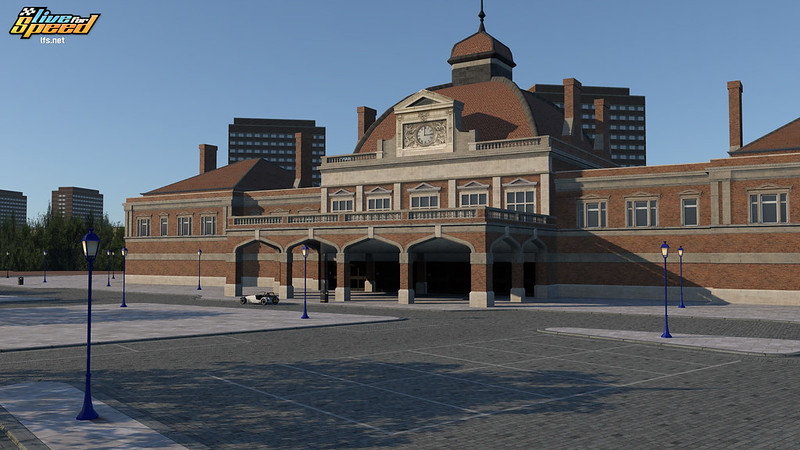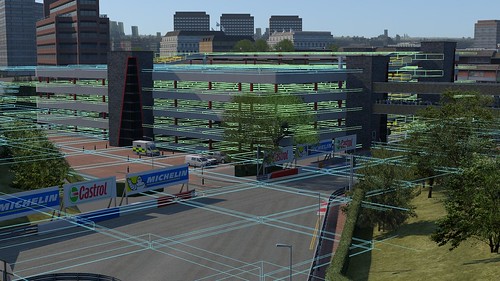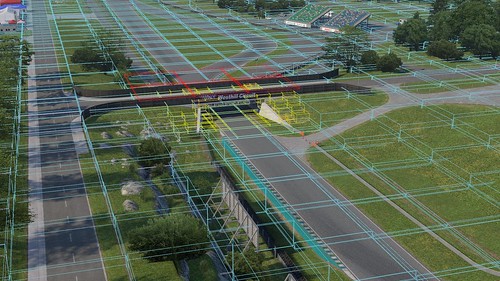
Live For Speed – September 2020 Progress Report – South City – Part 2
With 15 years on, the scene, Live for Speed might be old, and some of the more rookie sim racers might not even realize that the title exists.
However, yours truly, and many older community members out there, still regard this title as the most fun and exciting title to date. LFS had its ups and downs but is still going strong after all these years.
A few years ago, the small 3-man development team decided to revitalize the racing simulation with an extensive graphical update including updated textures, a new detailed shadow system, a more realistic road surface, real-time Day To Night Transitions, and more to come.
Back in June, the LFS development team already shared some previews of the updated South City track and demonstrated the Image-based automatic exposure and day to night transitions.
In this latest (September) report, the developers talk about the more recent updates and show us some new screenshots.
September 2020 Progress Report (Quote):
A live echo render has been implemented. This replaces the old system that was pre-generated and stored in the path (an invisible structure used to track your car’s location as you drive around). A special image for each ear is drawn, containing depth and angle information. The image is analyzed by a compute shader on the graphics card creating a histogram for each ear. The histogram is read back by the CPU and used to update the reverberators.
For people who don’t know all about graphics cards, a compute shader is a special program that runs on the GPU. The modern GPU is really a special computer that can do some things very quickly by doing the same calculation on hundreds or thousands of different pixels simultaneously. These days it is not only about drawing triangles. The automatic exposure histogram is now also calculated by a compute shader, saving CPU time.
A new system has been developed for occlusion culling. This is the process of not drawing (in each frame) objects that are ‘occluded’ because they are hidden by nearer objects. The frame rate must stay high even in an environment full of detailed objects. For example, you may be near a building so there is no point drawing thousands of objects that are behind it. This is especially important for driving views as we must first draw mirror views than the main view. In VR it’s even worse as these views are drawn twice each, slightly offset for each eye. Also, we can avoid drawing some objects into the shadow maps, as there is no point casting shadows onto objects we cannot see.
The difficulty is in knowing which objects are hidden. Until now, the visible objects were stored in the path. For open configurations, we needed to add paths for side roads, car parks, and open areas to keep the frame rate high. The paths were also used for lighting and echo information
With the multi-story car parks at South City, it was hard to see how to make a path to cover all driveable areas. So we now have an octree system that analyses the driveable surfaces and creates cuboids to cover all places you might be in your car. The octree is subdivided were necessary to deal with multiple ground heights, such as bridges, tunnels, and car parks. The occlusion data is computed and stored in the octree, then used to switch off areas that cannot be seen from your location.
The shadow system has been optimized to allow sunset and sunrise with good frame rates. Realtime shadows are very important for realistic graphics and allow lighting to change with time. The shadow maps are a series of special images of the world, drawn from the direction of the sun, containing depth information so the GPU can calculate whether each pixel in your view is in the sun or shade.
One notable problem for performance is when the sun is low in the sky and you are on the far side of the track area, away from the sun. In this case, so many of the world’s objects are between the sun and your view, and any of these objects might contribute to the shadows you can see. By taking a more detailed look at which objects are visible from your location, LFS can now reduce the area drawn into the shadow maps.
Finally, we’d like to show you a few more work-in-progress screenshots of the updated South City. Extra areas and scenery are being added and roads are being opened increasing the possibilities of extra configurations.
Official Webpage – www.lfs.net |
 Bsimracing Sim Racing Resources and News for the racing enthousiast.
Bsimracing Sim Racing Resources and News for the racing enthousiast.









